A Complete Guide to Visiting Lhasa 2021 – Part I
The capital city and administrative center of the Tibet Autonomous Region (TAR), Lhasa is one of the highest cities in the world and is the world’s highest capital city. It receives thousands of visitors every year and visiting Lhasa is dream come true for most the Tibetans in Kham and Amdo regions. At an altitude of 3,656 meters above sea level, this ancient city has been the center of Tibetan life for more than 1,300 years. It became the new capital of the Tibetan Empire after the rise of the 33rd Tibetan king, Songtsen Gampo.
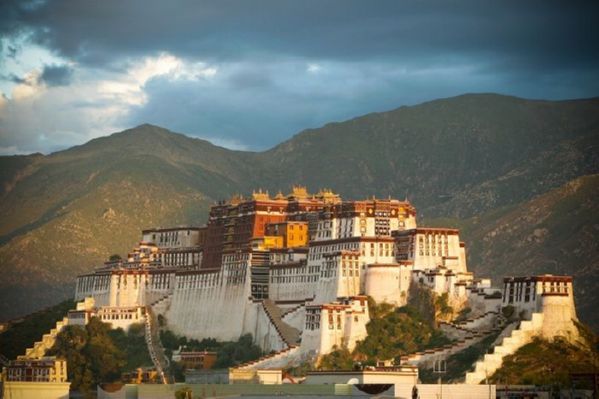
Potala Palace in Lhasa in summer
Known as the “City of Sunshine” because of the massive number of sunlight hours the city gets throughout the year (averaging more than 8 hours of sunshine per day). Lhasa is one of the most stunning cities in the world. Translated to “place of the gods”, the city is actually the second most populated city on the plateau. Though the most populated city is Xining in Qinghai Province, which is outside the TAR. Here is a guide to visiting Lhasa.
Table of Contents
History of Lhasa
Historical documents from the 7th century show that the city was originally known as “Rasa”, which means “place surrounded by a wall”. Certainly, the first recorded use of the name “Lhasa” comes from a treaty signed in 822AD between China and Tibet. So that referred to the Jowo Temple in the city.
The original capital of the Tibetan kings was founded in the Yarlung Valley area near Tsedang, in Lhoka Prefecture, in around 127BC. It was the Yumbu Lhakang or Yungbulakang Palace. After the move to Lhasa of the Tibetan capital by Songtsen Gampo in around 637AD, the palace became the summer palace of the king and his Chinese wife, Princess Wencheng.
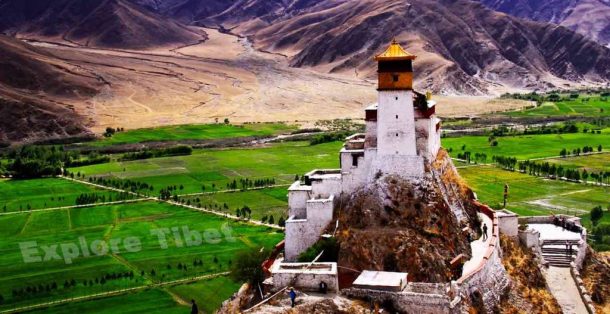
Yumbhu Lhakang Palace
After raising the first buildings on the site of the new capital, on Moburi where the Potala Palace now stands. So the Tibetan king contracted two marriages of an alliance, with Nepal and the Tang Dynasty. The first marriage was to Princess Bhrikuti of Nepal in around 639AD. Another to Princess Wencheng of the Tang Dynasty in 641AD. It is widely believed that it was Princess Bhrikuti who converted him to Buddhism, which was later reinforced by Princess Wencheng.
Jokhang and Ramoche Temples
It was after these two marriages that the king constructed the two sacred temples of Jokhang and Ramoche. Therefore, they built a house for the statues of Buddha that were brought to Tibet by his new wives. For the next 300 years, the Tibetan kings ruled the plateau lands, their empire extending as far north as Qinghai Province and as far east as Chengdu in Sichuan Province.
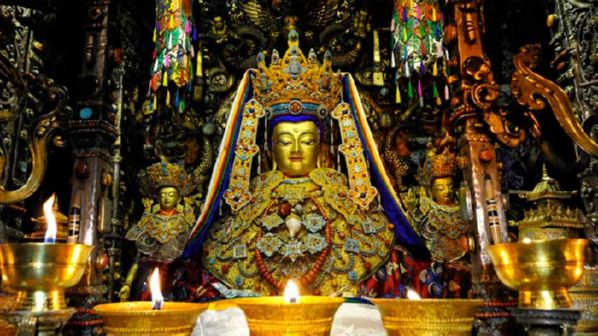
The statue of the Sakyamuni Buddha in the Jokhang Temple
Despite the city not being the center of Tibet from the end of the 9th century until the middle of the 17th century. When it was once again raised as the center of Tibetan government by the 5th Dalai Lama. It remained the center of the Tibetan Buddhist culture. Legend tells of the demoness that was pinned to the earth by the Tibetan king and Padmasambhava, the Indian Buddhist master, on which site the Jokhang Temple was built.
The Great Three Gelug Monasteries
In the 15th century, the city once again began its rise to power, with the construction of three major monasteries of the Gelug School of Tibetan Buddhism. Founded by the Buddhist master, Je Tsongkhapa, the Gelug School saw three new monasteries in Lhasa. It was built by his disciples as part of the Buddhist revival in Tibet. Known as Ganden, Sera, and Drepung Monasteries. Hence, these three have become the main three monasteries of Gelugpa, and important historic, cultural, and religious sites in the capital.
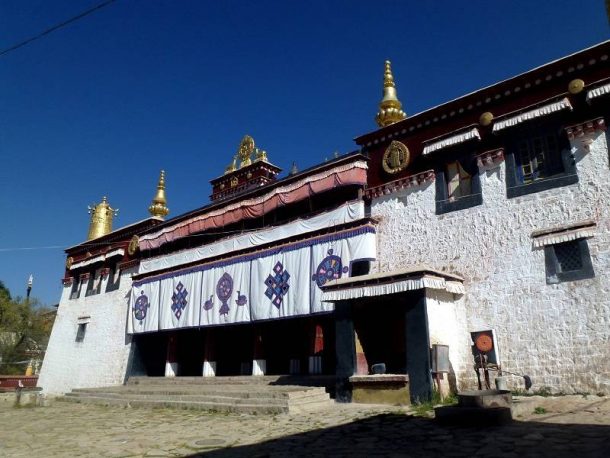
Sera Monastery in Lhasa
Located in a triangular formation around the city, with the Potala Palace later being situated on the Red Hill at the center point of the triangle, the three monasteries have grown to become major attractions in Lhasa, with the stunning debates of the Sera Monastery being one of the favorite sights for many travelers to the city.
The Winter and Summer Palaces
In the 17th century, the fifth Dalai Lama, Lobsang Gyatso, moved the center of administration back to Lhasa after reunifying Tibet under one leader. The construction of the Potala Palace began in 1645 on the Red Hill, the site where Songtsen Gampo constructed the first buildings in his new capital of Rasa. The Palace, built in two parts and consisting of the Red Palace and the White Palace, was named after the legendary Mount Potalaka, the mythical home of the bodhisattva, Avalokiteśvara.
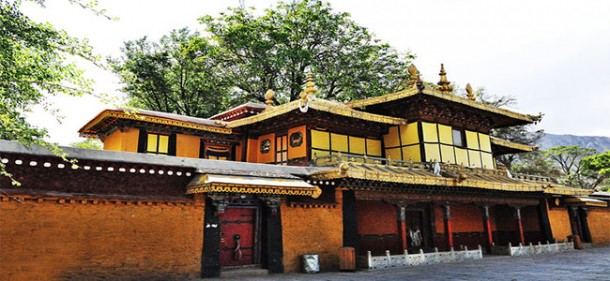
Norbulakhang the summer palace in Lhasa
In 1755, the 7th Dalai Lama had the palace at Norbulingka built, and moved the civil administration there. Leaving the Potala Palace as the winter palace of the Dalai Lama. The new palace, surrounded by some of the most spectacular parklands in the world. It served as the summer palace of the Dalai Lama right up to the 1950s. Now, the palace is a UNESCO World Heritage Site. The gardens are considered to be the largest man-made garden in the world.
Modern Lhasa
Much has changed in the city in the 1,300 years since it was first founded. Yet it seems when wandering the ancient cobbled streets of Old Lhasa. That it has remained the same throughout the centuries. And, indeed, much of it has. The Jokhang and Ramoche temples remain much as they were when first constructed, with only a few minor changes. The dirt track of the Jokhang kora has become a paved street that surrounds the entire temple complex. As well as becoming one of the most famous shopping streets in Lhasa.
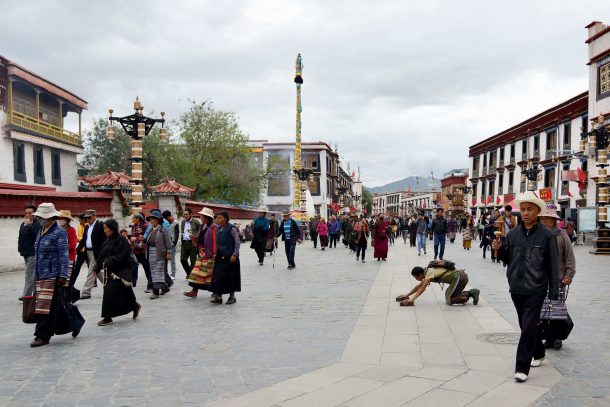
Tibetan pilgrims in Lhasa
In the 1940s, the merchants of the city could cater to almost any needs of its citizens and visitors. Including Australian butter from dairy cows and Scotch Whisky from the highlands of Scotland. Heinrich Harrer, the Austrian mountaineer, sportsman, geographer, and author known for being in the team that conquered the North Face of Mount Eiger in Switzerland, said during his time as an official of the Tibetan government: “There is nothing one cannot buy or at least order. One even finds the Elizabeth Arden specialties, and there is a keen demand for them. You can order, too, sewing machines, radio sets, and gramophones and hunt up Bing Crosby records.”
Tibetan Tourism
The city, and indeed the entire region, has been open to tourism since the 1980s. In the early days, travel was unrestricted and free. Backpackers took this opportunity to travel to the city on the roof of the world. The tourism industry began in the Tibetan capital. While there have been many changes to tourism and the ability to travel freely over the last decade, travel to Tibet is not as hard as many people think.
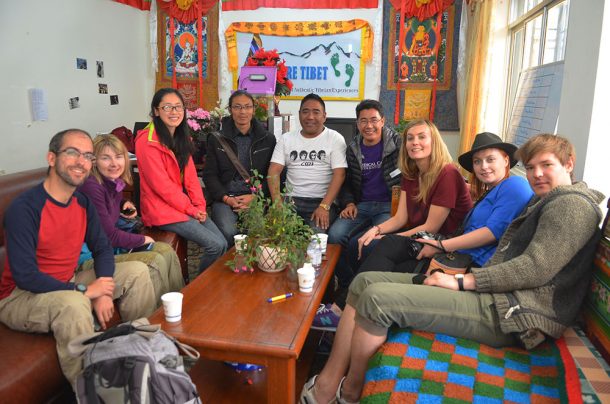
Group Tour Clients visit Explore Tibet Head office in Lhasa
Travel to Lhasa now requires certain Tibet travel permits and needs all visitors to be on a pre-booked tour from a registered Tibetan tour operator. However, if this seems like a lot of hassle, then you could not be more wrong. With the move to pre-booked tours, the problems of arranging all the permits and paperwork, not to mention the mountain of red tape required to get to Lhasa. It is all left to the tour operators. And all the traveler has to do is get their visa for China and book their tour.
With such an easy and simple solution for arranging a visit to this stunning capital city. So it is small wonder that hundreds of thousands of international tourists flood through the city every year. Lhasa Gonggar International Airport and the Qinghai Tibet Railway from Xining to Lhasa have both helped to increase the number of tourists to the city. That made it much simpler and easier to get to the roof of the world. So, what are you waiting for? Come to visit this beautiful city.
Recent Posts
The Ultimate Guide to Tibet Tours, Travel, and Trekking Adventures
How to Explore Tibetan Culture
Exploring Lhasa:The Heart of Tibet
All Categories
- About Tibet
- book a Tibet tour
- Buddhism Practice
- Budget Tour
- China-Tibet Train
- Customized Tibet tour
- Historical Sites
- Hot Springs in Tibet
- News
- Photography in Tibet
- Tibet attraction
- Tibet Group Visa
- Tibet Motorcycle Tour
- Tibet Small Group Tours
- Tibet Tours and Tibetan Tour Guide
- Tibet Train
- Tibet Travel FAQs
- Tibet Travel Information
- Tibet Travel News
- Tibet Travel Permit Update
- Tibet Travel Prices Rises
- Tibet Trek
- Tibet Trekking Tour
- Tibet weather and climate
- Tibet Wildlife animals
- Tibet Winter Tour
- Tibetan Buddhism
- Tibetan Cultural Features
- Tibetan Culture and Poeple
- Tibetan Festivals
- What to see in Tibet



